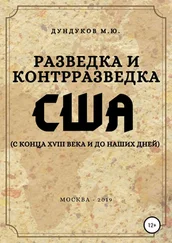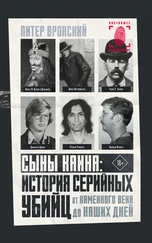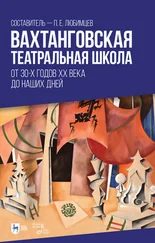Gombrich, E. H. Reminiscences of Collaboration with Ernst Kris (1900–1957) / In: Tributes: Interpreters of Our Cultural Tradition. Ithaca, NY: Cornell University Press, 1984.
Gombrich, E. H. The Essential Gombrich: Selected Writings on Art and Culture. R. Woodfield, ed. London, Phaidon Press, 1996.
Kris, E., and E. H. Gombrich The Principles of Caricature // British Journal of Medical Psychology 17 (1938): 319–342.
Gombrich, E. H., and E. Kris Caricature . London: King Penguin Books, 1940.
Gregory, R. L., and E. H. Gombrich, eds. Illusion in Nature and Art . New York: Scribner, 1980.
Helmholtz, H. von Treatise on Physiological Optics (1910). Southall, J. P. C., editor & translator. New York: Dover, 1925.
Henle, M. 1879 and All That: Essays in the Theory and History of Psychology. New York: Columbia University Press, 1986.
Hoffman, D. D. Visual Intelligence: How We Create What We See. New York: W. W. Norton, 1998.
Kemp, W. Introduction / In: Riegl, A. The Group Portraiture of Holland. Los Angeles: Getty Research Institute for the History of Art and the Humanities, 1999. P. 1.
King, D. B., and M. Wertheimer Max Wertheimer and Gestalt Theory. New Brunswick, NJ, and London: Transaction Publishers, 2004.
Kopecky, V. Letters to and from Ernst Gombrich regarding Art and Illusion, including some comments on his notion of “schema and correction” // Journal of Art Historiography 3 (2010).
Kris, E. Die Charakterköpfe des Franz Xaver Messerschmidt: Versuch einer historischen und psychologischen Deutung // Jahrbuch der Kunst-historischen Sammlungen. Wien 4 (1932): 169–228.
Kris, E. Ein geisteskranker Bildhauer ( Die Charakterköpfe des Franz Xaver Messerschmidt ) // Imago 19 (1933): 381–411.
Kris, E. The psychology of caricature // International Journal of Psycho-Analysis 17 (1936): 285–303.
Kris, E. Psychoanalytic Explorations in Art. New York: International Universities Press, 1952.
Kuspit, D. A little madness goes a long creative way // Artnet Magazine Online, 2010. См.: http://www.artnet.com/magazineus/features/kuspit/franzxaver-messerschmidt10-7-10.asp.
Mamassian, P. Ambiguities and conventions in the perception of visual art // Vision Research 48 (2008): 2143–2153.
Meulders, M. Helmholtz: From Enlightenment to Neuroscience. Cambridge, MA: MIT Press, 2010.
Mitrović, B. A defense of light: Ernst Gombrich, the Innocent Eye and seeing in perspective // Journal of Art Historiography 3 (2010): 1–30.
Neisser, U. Cognitive Psychology. New York: Appleton-Century-Crofts, 1967.
Persinger, C. Reconsidering Meyer Schapiro in the New Vienna School // Journal of Art Historiography 3 (2010): 1–17.
Popper, K. The Logic of Scientific Discovery. London and New York: Routledge, 1992.
Riegl, A. The Group Portraiture of Holland. Intro. by W. Kemp. Los Angeles: Getty Research Institute for the History of Art and the Humanities, 1999.
Rock, I. Perception. San Francisco: W. H. Freeman, 1984.
Roeske, T. Traces of psychology: The art historical writings of Ernst Kris // American Imago 58 (2001): 463–474.
Rose, L. Daumier in Vienna: Ernst Kris, E. H. Gombrich, and the politics of caricature // Visual Resources 23 (1–2) 2007: 39–64.
Rose, L. Psychology, Art, and Antifascism: Ernst Kris, E. H. Gombrich, and the Caricature Project. Fordham University Press. In press. 2011.
Sauerländer, W. It’s all in the head: Franz Xaver Messerschmidt, 1736–1783: From Neoclassicism to Expressionism // New York Review of Books 57 (16) 2010.
Schapiro, M. The New Viennese School / In: The Vienna School Reader: Politics and Art Historical Method in the 1930s . C. S. Wood, ed. New York: Zone Books, 2000.
Schapiro, M. Theory and Philosophy of Art: Style, Artist, and Society . New York: George Braziller, 1998.
Schorske, C. E. Fin-de-Siècle Vienna: Politics and Culture . New York: Vintage Books, 1981.
Simpson, K. Viennese art, ugliness, and the Vienna School of Art History: The vicissitudes of theory and practice // Journal of Art Historiography 3 (2010): 1–14.
Wickhoff, F. Roman Art: Some of Its Principles and Their Application to Early Christian Painting. A. Strong, translator & editor. New York: Macmillan, 1900.
Worringer, W. Abstraction and Empathy: A Contribution to the Psychology of Style. New York: International University Press, 1908.
Wurtz, R. H., and E. R. Kandel Construction of the Visual Image / In: Principles of Neural Science . 4 thed. E. R. Kandel, J. H. Schwartz, T. Jessell, eds. New York: McGraw-Hill, 2000. Pp. 492–506.
Глава 12. Мозг как творческий аппарат
Ferretti, S. Cassirer, Panofsky, and Warburg: Symbols, Art, and History. New Haven: Yale University Press, 1989.
Friedlander, M. J. On Art and Connoisseurship ( Von Kunst und Kennerschaft ). Berlin: Bruno Cassirer Ltd., 1942.
Gombrich, E. H. Art and Illusion. A Study in the Psychology of Pictorial Representation. Princeton and Oxford: Princeton University Press, 1960.
Handler-Spitz, E. Psychoanalysis and the aesthetic experience / In: Art and the Psyche. New Haven: Yale University Press, 1985. Pp. 55–65.
Holly, M. A. Panofsky and the Foundations of Art History. Ithaca, NY: Cornell University Press, 1984.
Necker, L. A. Observations on some remarkable optical phenomena seen in Switzerland, and on an optical phenomenon which occurs on viewing a figure of a crystal or geometrical solid // London and Edinburgh Philosophical Magazine and Journal of Science 1 (5) 1832: 329–337.
Panofsky, E. Studies in Iconology: Humanistic Themes in the Art of the Renaissance. Boulder, CO: Westview Press, 1939.
Rock, I. Perception. San Francisco: W. H. Freeman, 1984.
Rose, L. Psychology, Art and Antifascism: Ernst Kris, E. H. Gombrich, and the Caricature Project . Manuscript (2010).
Searle, J. Minds, Brains, and Science ( 1984 Reith Lectures ). Cambridge, MA: Harvard University Press, 1986.
Wittgenstein, L. Philosophical Investigations. New York: Macmillan, 1967.
Глава 13. Начало новой живописи
Gauss, C. E. The Aesthetic Theories of French Artists: 1855 to the Present. Baltimore: Johns Hopkins University Press, 1949.
Gombrich, E. H. The Story of Art. London: Phaidon Press, 1950.
Gombrich, E. H. Kokoschka in His Time. Lecture Given at the Tate Gallery on July 2, 1986. London: Tate Gallery Press, 1986.
Hughes, R. The Shock of the New: The Hundred-Year History of Modern Art – Its Rise, Its Dazzling Achievement, Its Fall. 2 nded. London: Thames and Hudson, 1991.
Novotny, F. Cézanne and the End of Scientific Perspective. Excerpts / In: The Vienna School Reader: Politics and Art Historical Method in the 1930s . C. S. Wood, ed. New York: Zone Books, 2000. Pp. 379–438.
Глава 14. Обработка мозгом зрительных образов
Crick, F. The Astonishing Hypothesis: The Scientific Search for the Soul. New York: Charles Scribner’s Sons, 1994.
Daw, N. How Vision Works. New York: Oxford University Press, 2012.
Frith, C. Making Up the Mind. How the Brain Creates Our Mental World. Malden, MA: Blackwell Publishing, 2007.
Читать дальше
Конец ознакомительного отрывка
Купить книгу




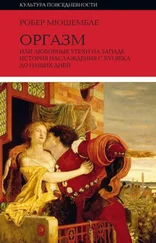

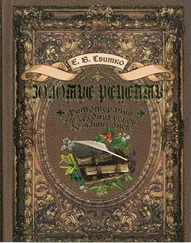
![Франк Трентманн - Эволюция потребления [Как спрос формирует предложение с XV века до наших дней]](/books/403210/frank-trentmann-evolyuciya-potrebleniya-kak-spros-fo-thumb.webp)
